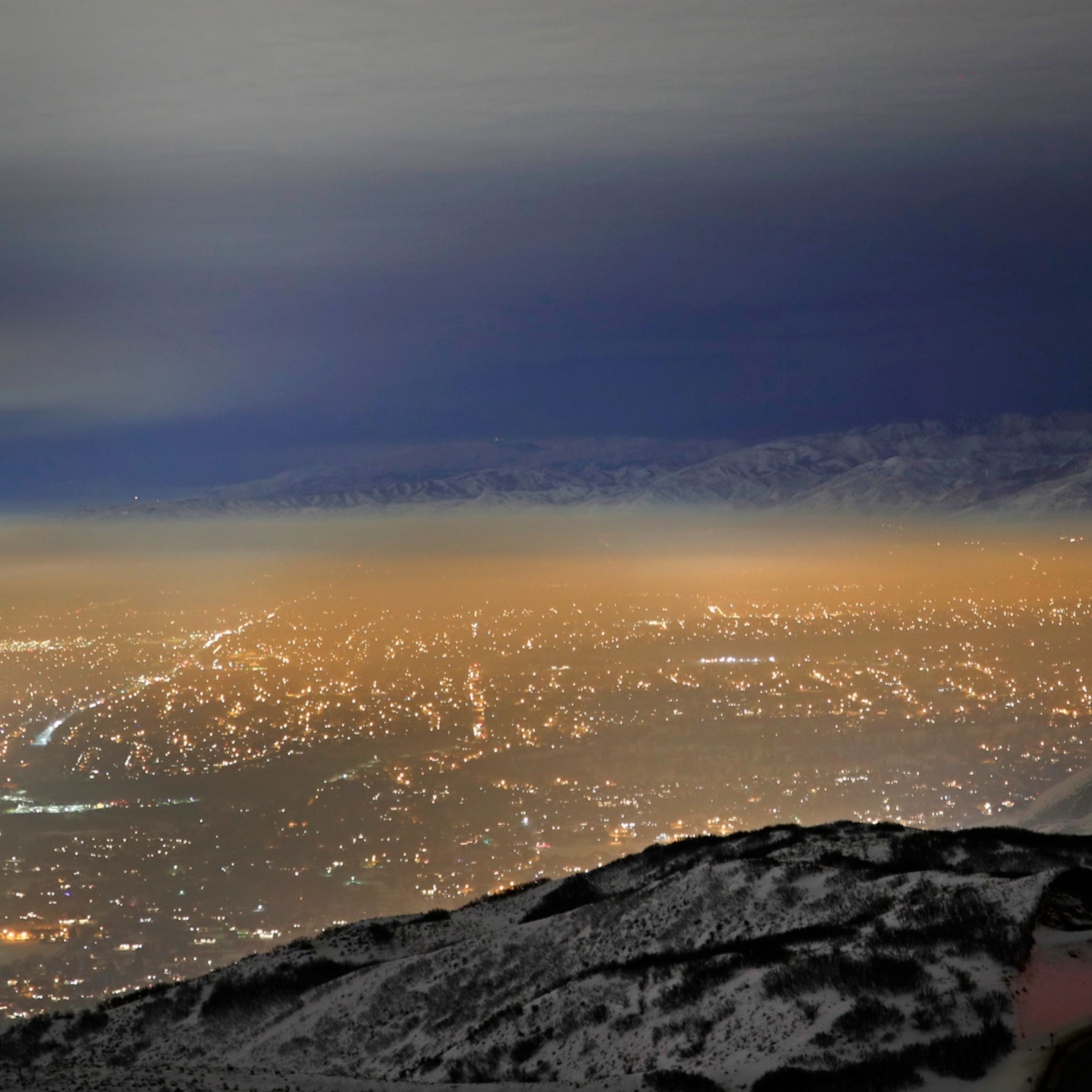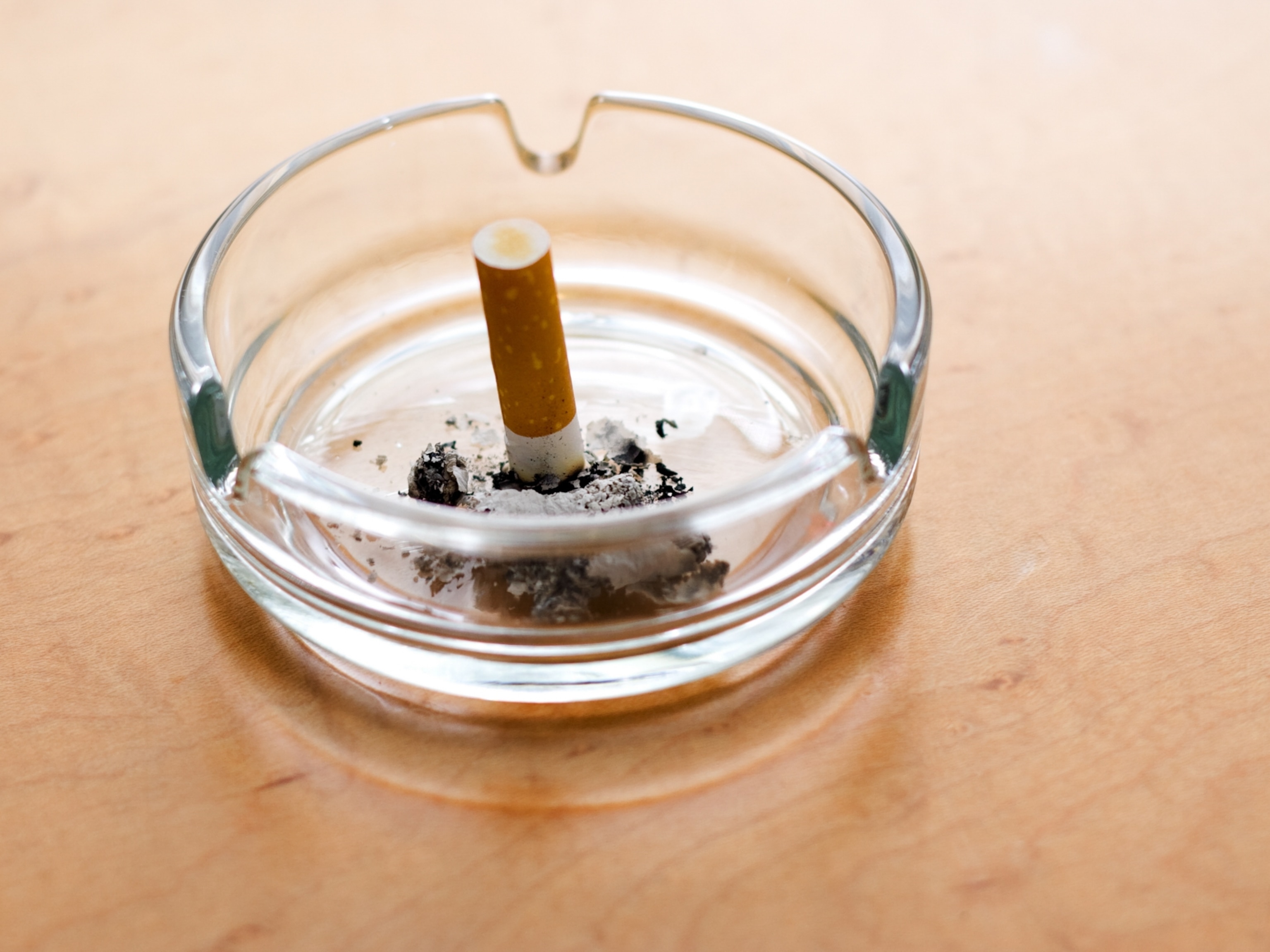What we're learning from lung cancer patients who never smoked
Worsening air pollution globally is causing lung cancer rates to rise everywhere. A look at Taiwan, where a majority of new cases affects non-smokers, offers powerful lessons for the rest of the world.

YUNLIN, TAIWAN — Two-thirds of people who get lung cancer in Taiwan have never smoked.
Xian Mei Yang knows this well. She was diagnosed with stage IV lung cancer after her arm snapped like a twig and the doctors discovered the metastases in her bones. Yang is 58 years old and hasn’t smoked a day in her life, but her doctor told her there was no hope and gave her six months to live.
“How is that possible?” says Yang, tearfully. “How did this happen to me?”
Lung cancer among never-smokers is rising worldwide. In one U.S. study of 12,000 lung cancer patients, the share of people who didn’t smoke rose from 8 to 15 percent over twenty years. A British study found similar results, with its never-smoking cohort jumping from 13 percent in 2008 to 28 percent in 2014. While these trends are multifactorial, one key reason is air pollution, according to the International Association for the Study of Lung Cancer.
Already, 83 million people in the United States are exposed to unhealthy, polluted air and that number is expected to increase by 50 percent by 2054. Meanwhile, lung cancer is killing 125,000 Americans each year—more than breast, colorectal, and cervical cancers combined. That's largely because it is caught too late; 74 percent of lung cancer cases in the U.S. are diagnosed at stage III or IV.
As smoking rates fall in the U.S. and air pollution rises, Taiwan may offer a model for building a robust lung cancer screening program for never-smokers.

How air pollution causes lung cancer
Air pollution is the “new tobacco,” said Tedros Adhanom Ghebreyesus, the head of the World Health Organization (WHO).
One of the biggest culprits is PM2.5—particulate matter that is 2.5 microns in size, or about thirty times smaller than a human hair. Much like cigarette smoke, these tiny pollution particles get sucked deep inside the lungs, damaging DNA inside cells, and increasing the risk of cancer.
(Human-made materials now equal weight of all life on Earth)
Every year, more than 300,000 people die of lung cancer due to PM2.5, and research suggests these pollution particles not only initiate cancer-causing genetic defects but drive tumor formation. According to a study last year in the journal Nature, PM2.5 incites a flush of immune cells into the lungs, and the resulting inflammation “wakes up” the EGFR mutation, triggering uncontrollable cell growth.
The air in Taiwan contains four times the number of PM2.5 considered safe according to the WHO, with sources of air pollution ranging from vehicle emissions to coal-fired power plants to petrochemical factories. That doesn’t account for the toxic haze floating in from China or Taiwan’s mountainous geography trapping in pollutants, says Kuan-Hsun Lian, a thoracic surgeon at National Taiwan University (NTU) Yunlin Branch Hospital.
(Human-made materials now equal weight of all life on Earth)
When Xian Mei Yang first moved to Yunlin, a county west of the Alishan Mountain Range, she immediately felt overwhelmed by the poor air quality. “It was very, very terrible,” she says. “It felt like asthma—I couldn’t breathe.”
Is lung cancer different in never-smokers?
Yang has adenocarcinoma, the most common type of lung cancer diagnosed in never-smokers.
“If you are a smoker, you can think of your lung as a bag of white marbles, and cancer is like putting a black marble in there,” says Daniel Boffa, chief of thoracic surgery at Yale. “The type of cancer a nonsmoker gets is more like putting in black sand.” Instead of a well-defined spot, it tends to be a little hazy.
These differences are not always so stark, but never-smokers have an advantage because in half the cases, their lung cancer can be treated with precision drugs, compared to 10 percent of smokers.
Doctors can thus better target specific mutations and block tumor growth in never-smokers, instead of having to rely on less effective carpet-bombing techniques like chemotherapy, according to Mong-Wei Lin, vice-chief of NTU’s medical school.
With such distinct characteristics and treatment, “lung cancer in never-smokers should be regarded as a different kind of disease,” he says.
How Taiwan adapted to never-smokers
With the common perception that lung cancer is only caused by cigarette smoking, never-smokers are often unaware of their disease until the latest stages.
Since the lungs have almost no nerve endings, “the most common symptom in lung cancer is no symptom at all,” says Pan-Chyr Yang, a pulmonologist and former NTU president, who is unrelated to Xian Mei Yang, the patient.
Lung cancer screening is one way to catch this disease early, but back in 2011, the only evidence for it was the National Lung Screening Trial, which focused on a heavy smoking, predominantly white cohort.
“We cannot just follow the screening program based on the Caucasian population in the United States,” says PC Yang. “Definitely, we will miss two-third of our lung cancer patients who never smoked.”
So, in 2015, Yang launched the Taiwan Lung Cancer Screening in Never-Smoker Trial (TALENT) to screen people with risk factors like family history or cooking without ventilation—but little-to-no smoking history. (Air pollution was not studied here—both because its relationship to lung cancer is well-known and because it’s difficult to quantify exposure, says Lin.)
More than 12,000 participants later, Yang presented the TALENT results at the World Conference on Lung Cancer in 2021, demonstrating how they found 2.1 lung cancers for every 100 never-smoking patients screened. To put that into perspective, the National Lung Screening Trial found lung cancer in 1.1 percent of cases, despite only screening people with heavy smoking histories. “Our criteria may be more effective,” Yang says.
And there’s already real-world evidence that lung cancer screening helped catch tumors earlier in Taiwan. At NTU Hospital, the number of stage III and IV lung cancer diagnoses dropped from 71 percent to 34 percent between 2006-2011 and 2015-2020, with early diagnoses filling the gap.
This means lives saved, Yang emphasizes, with the general five-year survival rate for lung cancer more than doubling, from 22 percent to 55 percent.
For reference, the lung cancer survival rate today in the U.S. is 25 percent.
Taiwan’s lung cancer screening program
With these results in hand, Taiwan launched its national screening program in July 2022, establishing one pathway for those with heavy smoking histories and another for never-smokers with a family history of lung cancer.
Mong-Wei Lin, who is also a thoracic surgeon, compares the situation to Taiwanese rice dumplings—each individually wrapped but tied together in a cluster. “You pick up one; you can pick up the whole group,” Lin says. “Every family will have one patient with advanced stage that is symptomatic, and the others can be saved by the first.”
Shun-Ching Lai has lung cancer, for example, as does her husband, son, and daughter. Only her husband smoked, and after some chest tightness and coughing, he was diagnosed first—with inoperable stage IV disease. But that prompted the rest of the family to get screened and discover they all had stage I or II disease. “All three of us received surgery, performed by Professor Lin,” Lai says.
“We tried to spread the message that we should be screened as much as possible,” adds Lai’s son. “We want our relatives and friends to discover lung cancer early.”
Alongside this word-of-mouth campaign, the Taiwanese government has prioritized screening, recognizing that it’s not only a life-saving opportunity but a money-saving one.
“Our national health insurance was spending most of their resources taking care of lung cancer patients, but the outcomes were still very bad. Most patients still died early,” says PC Yang. These trends are similar to the U.S., where stage I lung cancer costs a median $25,000 to treat, but stage IV disease costs as much as $210,000—for a 8 percent chance of survival.
As such, lung cancer screening advertisements flood Taiwanese TV shows, radio broadcasts, and newspapers—championed by patients like former Vice President Chien-jen Chen. Hospitals will call people to inform them about lung cancer screening and hand out pamphlets to those walking in, says Ching Ming Chiu, director of screening at NTU Cancer Center. The Taiwanese government, in turn, has tied reimbursements for cancer treatment to how well hospitals’ screening programs work.
For contrast, the majority of Americans—62 percent—don’t know that lung cancer screening exists. While there is a swell of pink ribbons and awareness for breast cancer screening, there’s been no similar campaign for lung cancer, says Ashley Prosper, a radiologist at University of California Los Angeles. So, people don’t normally bring up lung cancer screening with their primary care providers, and with 15-20 minutes per patient, their doctors usually don’t either.
But in Taiwan, patients independently seek out lung cancer screening, if they think they’re eligible.
All these reasons contribute to why America’s lung cancer screening rate is “unacceptably low,” according to University of California San Francisco epidemiologist Scarlett Gomez. Only 4.5 percent of eligible individuals are screened. The U.S. program has been running for a decade, but PC Yang describes how Taiwan’s two-year-old effort is already well ahead, with 15 percent uptake.
How America can adapt to never-smokers
Even if the U.S. prioritized lung cancer screening and rolled out an awareness campaign, it would be useless for never-smokers since they’re not eligible for screening.
“If you want to have better lung cancer control worldwide, then you need to increase the eligibility to cover the nonsmoking population—that are at high-risk,” says PC Yang.
Inspired by the research in Taiwan, scientists at UCSF and New York University are working to determine which never-smokers are in this high-risk cohort, focusing first on Asian American women. While as many as 20 percent of U.S. lung cancer cases occur in never-smokers, more than half of Asian American women who get lung cancer have never smoked, per Gomez’s research.
In 2021, she thus launched the Female Asian Never Smokers study to investigate the genetic, cultural, and environmental risk factors—such as secondhand smoke and family history. The same year, Elaine Shum, an oncologist at NYU, launched a clinical trial, giving lung cancer screening to 1,000 never-smoking Asian women.
“The biggest goals are to change guidelines and have insurance companies cover some of these scans,” says Shum, as lung cancer becomes increasingly dominant in never-smokers. “We need to start planning now for that future. If we react when a crisis happens, then it’s too late to make a difference.”








